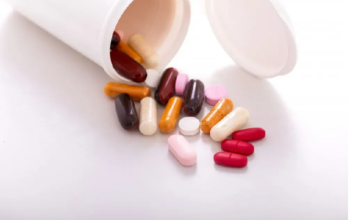Pulmonary nodules, which also go by the term lung nodules, are small roundish growths that typically develop in the lungs. Thanks to technological advancements, they are discovered by x-days or CT scans. Compared to other nodules (lymph, vocal cord, thyroid, etc.), the said nodules are quite common and are about three centimetres in diameter.
Also, while the discovery of a lung nodule can be a source of anxiety for patients, probably due to the fact that it is often associated with cancer, it is important to note that a vast majority of pulmonary nodules are benign or non-cancerous. Despite this, a level of caution should be taken by those who develop the said condition. In line with this, understanding their nature is crucial when it comes to managing them in an effective and efficient manner.
Those who need help with the said condition came to the right place. This article explains important factors that are related to pulmonary nodules. Read on for details.
Causes
Pulmonary nodules can be developed through a wide range of conditions, which range from infections and inflammatory conditions to benign tumours, and so forth. Some of the most common causes are elaborated below.
- Infections – Bacterial, viral, or fungal infections, if mismanaged or neglected, may lead to the formation of granulomas or small regions of inflammation, which may appear as nodules.
- Inflammatory conditions – Disorders like rheumatoid arthritis or sarcoidosis may cause nodules to form as a result of the inflammatory process.
- Benign tumours – These may include hamartomas, a malformation that is made up of cells and tissues. This is one of the most common types of benign lung tumours. Another benign tumour cause is granulomas, clumps of immune cells that are often formed as the body responds to inflammation.
- Cancer – As mentioned earlier, only a smaller percentage of pulmonary nodules are cancerous; those that come with larger, irregular edges, are often developed by those who have a family history of cancer, smokers, and so on, are of particular concern.
- Other conditions – Metastatic cancer that has spread from other parts of the body.
Diagnostic procedures
The assessment of pulmonary nodules is essential to determining their cause and whether they require extensive treatment or otherwise. The diagnostic proceedings may include the following:
- Imaging tests – The size, shape, and location of a nodule, among other things, can be used to determine imaging tests like CT scans, which provide more accurate and thorough images than conventional X-rays.
- PET scans – Positron Emission Tomography or PET scans can aid in the assessment of whether a nodule is more likely to be malignant or benign by determining its metabolic activity
- Biopsy – In instances where a nodule’s nature is confusing, extensive imaging in the mould of biopsy may be necessary. This to obtain a tissue sample that is going to be used for analysis. This can be done by means of bronchoscopy, surgery, or needle biopsy.
- Treatment – If the lung nodule is malignant, the type of treatment is going to depend on the stage of the cancer. The long list includes surgery, chemotherapy, or radiation therapy. On the other hand, benign nodules may require surgery if their growth is significantly fast.
Important things to consider
- Don’t panic – As mentioned earlier, the detection of a lung nodule can be stressful, and oftentimes can lead to panic attacks. However, it should be noted that most of the detected nodules are benign, and if they are benign early detection can drastically improve positive outcomes.
- Follow-up is a must – It is best to religiously follow doctor-recommended monitoring intervals. This is to ensure changes are noticed, and adjustments can be made in a timely manner.
- Quit smoking – For patients who smoke, quitting is arguably the most important thing that they can do to boost their chances of regaining their healthy well-being.
- Consume a healthy diet – Good nutrition is essential for those who develop lung nodules. Those who are not sure about how to eat healthy can work hand in hand with a nutritionist who can come up with a food plan that can meet their unique nutritional needs.
- Become active – A doctor-approved workout plan can improve overall health and well-being, reduce fatigue, boost mood, and help maintain a healthy weight. It is important to note that even short walks and/or light stretching can deliver a wide range of benefits.
Summing up
In the end, the prognosis for patients with pulmonary nodules is heavily dependent on whether the nodule is benign or otherwise. Furthermore, with prompt evaluation, appropriate medical monitoring, and proper treatment–if required–the outlook should be positive for a vast majority of patients.




